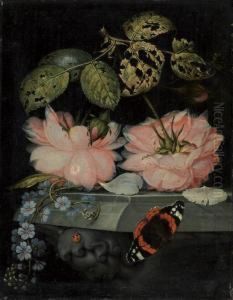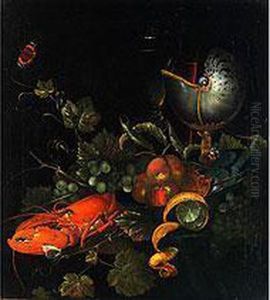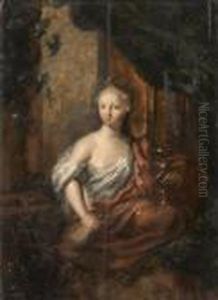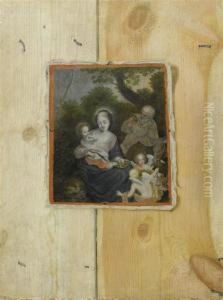Elliger D. A Ottmar Paintings
Elliger Ottmar, also known as Daniel Ottmar or Ottomar, was a distinguished painter born in 1666 in Göteborg, Sweden. Despite his Swedish birth, much of his professional career and artistic development took place in the Netherlands, making him a significant figure in the Dutch Golden Age of painting. His work primarily focused on still life and floral compositions, showcasing an exceptional ability to capture the intricate details and vibrant life of his subjects. This genre was particularly popular in the 17th century, reflecting the Dutch Republic's fascination with botany, exploration, and the exotic goods brought back from overseas colonies. Ottmar's paintings are characterized by their vivid colors, meticulous detail, and the often symbolic representation of flowers and fruits.
Ottmar moved to the Netherlands at a young age, where he was likely influenced by the works of Jan Davidsz de Heem, Willem van Aelst, and other prominent still life painters of the era. These artists were known for their ability to imbue static compositions with dynamism and depth, a skill that Ottmar honed and made his own throughout his career. His works often featured arrangements that went beyond mere aesthetic appeal, incorporating elements that spoke to the vanitas theme - a common motif in still life painting that serves as a reminder of life's transience.
The precise details of Ottmar's training and early career remain somewhat obscure, but his surviving works attest to a high level of skill and artistry. He became a member of the painters' guild in his adopted home, which was a crucial step for any artist wishing to sell their work and take on apprentices. Through his guild membership, Ottmar would have had access to a network of artists and patrons, enabling him to establish himself within the competitive Dutch art market.
Ottmar's contributions to the still life genre were highly regarded during his lifetime, and he enjoyed the patronage of wealthy merchants and nobles. His paintings were sought after for their beauty and complexity, often finding their way into the homes of the Dutch elite. Despite the high regard in which he was held, detailed records of his life are scant, and many aspects of his personal and professional endeavors remain shrouded in mystery.
Elliger Ottmar passed away in 1735. Although not as widely recognized today as some of his contemporaries, his work remains an important part of the Dutch Golden Age's artistic legacy. His paintings continue to be admired for their technical proficiency and their ability to capture the ephemeral beauty of nature. Ottmar's influence can be seen in the work of later artists who pursued still life painting, and his pieces are preserved in museums and collections around the world, serving as a testament to his skill and artistic vision.



